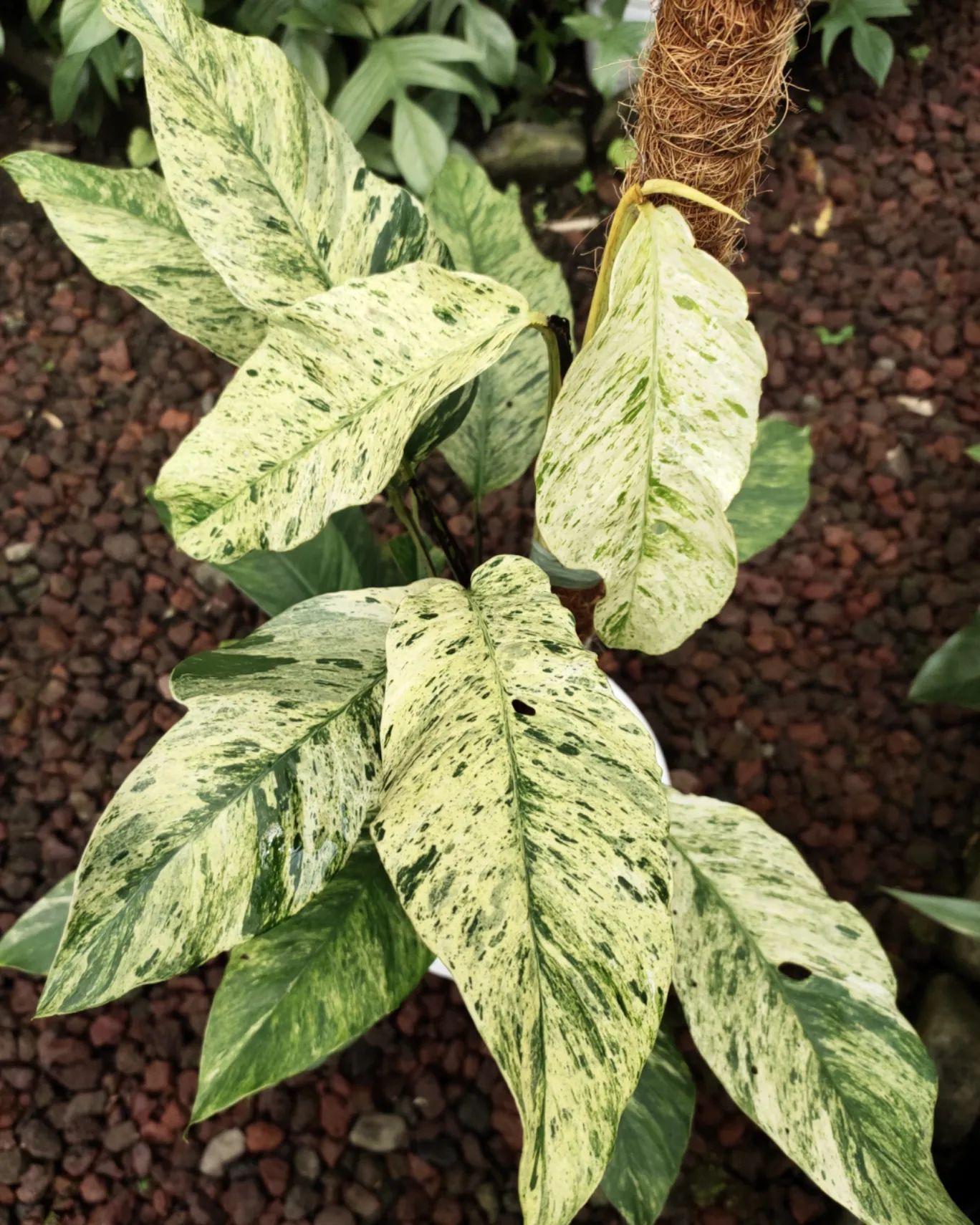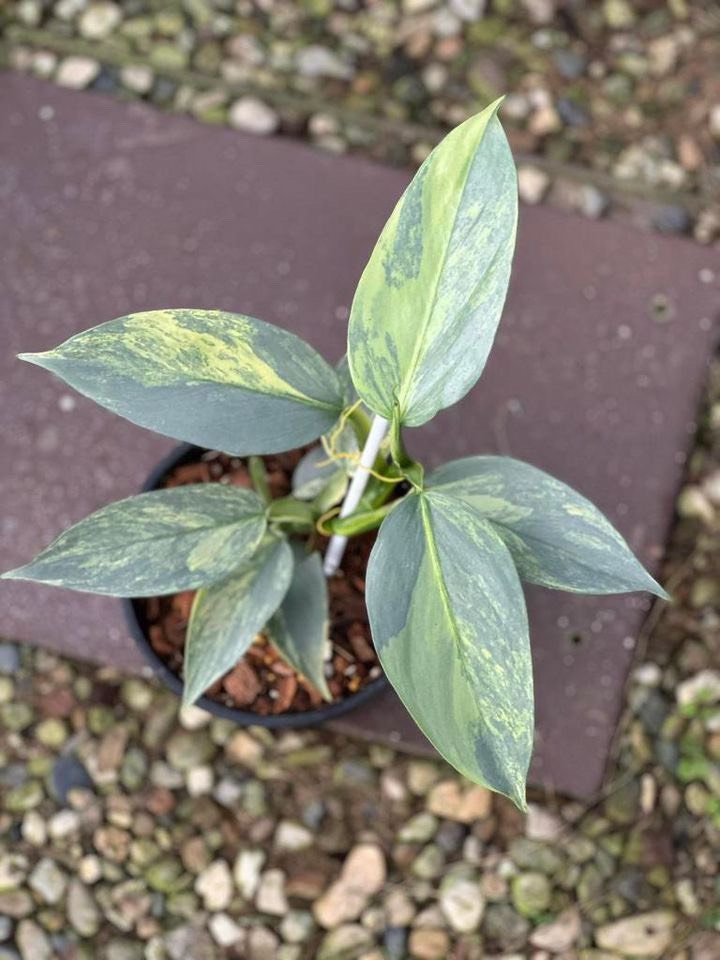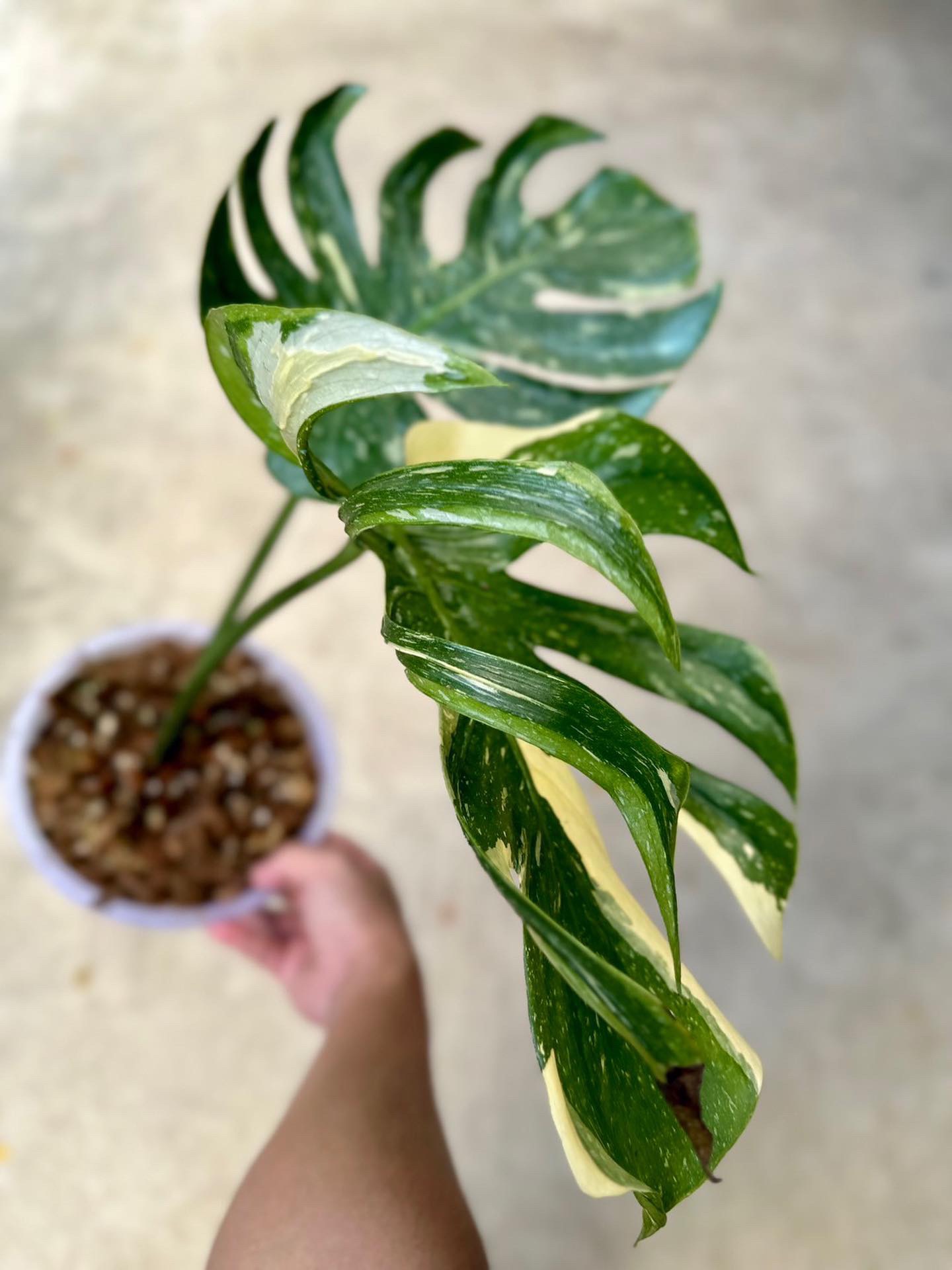Variegated plants, with their beautifully colored foliage, can add visual interest to gardens and landscapes. However, these plants also come with some unique challenges. Here are some of the most common problems faced by variegated plants:

Growth Rate and Vigor
Variegated plants often grow slower and have less vigor than their non-variegated counterparts. This is because:
Reduced Photosynthesis
The white or yellow sections of variegated leaves cannot perform photosynthesis since they lack chlorophyll. This reduces the overall photosynthetic output of the plant.
Nutrient Deficiencies
The lack of chlorophyll can also cause nutrient deficiencies, particularly of nitrogen and magnesium which are needed for chlorophyll production. This further stunts the plant’s growth.
Sensitivity to Light
The white sections of variegated leaves are very sensitive to light damage. Too much direct sun can scorch these areas, further impacting photosynthesis and growth.

List of the most sought after Rare Variegated Plants in 2023
Reversion
This is when variegated shoots or stems revert back to solid green growth. Reversion happens because:
Genetic Instability
Variegation is caused by a genetic mutation. These mutated cells can sometimes revert back to non-variegated cells.
Environmental Stress
Stressful conditions like drought, temperature extremes, or transplantation can trigger reversion. The non-variegated shoots are often better adapted to handle stress.
Pruning Response
Improper pruning cuts that remove the variegation or pruning during vulnerable periods can stimulate reversion from the cut stems.

Susceptibility to Pests and Diseases
The stunted growth and genetic abnormalities of variegations can make the plants more prone to certain pests and diseases such as:
Powdery Mildew
The poor vigor of variegated plants makes them susceptible to fungal diseases like powdery mildew.
Leaf Miners
The white areas seem to attract leaf mining insects like agromyzid flies.
Viral Infections
Variegated plants tend to be more vulnerable to debilitating viral diseases.
Special Cultural Requirements
Caring for variegated plants requires paying more attention to:
Soil Fertility
Rich soil with balanced nutrition is vital to fuel the limited growth of variegated plants.
Water and Humidity
Their thin leaves lose moisture rapidly so they need consistently humid conditions. Allowing them to dry out causes scorching.
Light Conditions
They need bright but indirect light to maximize photosynthesis without burning the leaves.
Shelter from Weather Extremes
Their stunted growth makes them vulnerable to wind, heavy rain, hail, frost etc so they benefit from a sheltered location.
Conclusion
The exquisite variegated foliage comes at a cost – slower growth, genetic instability, and increased susceptibility to environmental stresses. However, being aware of their unique requirements allows gardeners to take steps to help variegated plants thrive. Providing sheltered spots with filtered light, maintaining even soil moisture, and boosting fertility are the keys to success. With proper care, the beauty of variegation can be enjoyed without the headaches!
FAQ
- Why are the leaves of my variegated plant turning brown or yellow? A: Leaf discoloration in variegated plants can be caused by various factors, such as overwatering, insufficient light, or nutrient deficiencies. Assess your plant’s care routine to identify the specific issue.
- How can I prevent my variegated plant from losing its variegation? A: Variegation can fade or disappear due to excessive exposure to direct sunlight. To prevent this, place your variegated plant in bright, indirect light to maintain its unique foliage patterns.
- What should I do if my variegated plant is growing slower than expected? A: Slow growth in variegated plants may result from poor soil quality or lack of nutrients. Consider repotting your plant in a well-draining mix and fertilizing it regularly with a balanced, water-soluble fertilizer.
- Are variegated plants more susceptible to pests and diseases? A: Variegated plants are not inherently more susceptible to pests and diseases than non-variegated ones. However, their weakened or slower growth due to variegation may make them more vulnerable. Regularly inspect your plant for signs of pests or diseases and take prompt action if necessary.
- Can I propagate variegated plants to create new ones with the same variegation patterns? A: Yes, you can propagate variegated plants through methods like stem cuttings or division. Keep in mind that not all propagated plants will inherit the same variegation patterns as the parent plant. It’s a matter of genetics, and variegation can vary among offspring.

